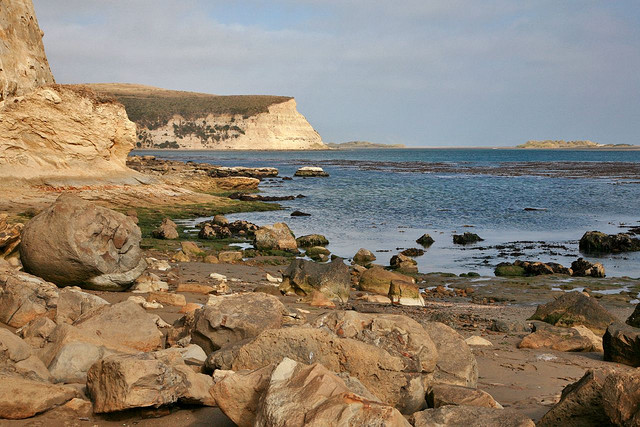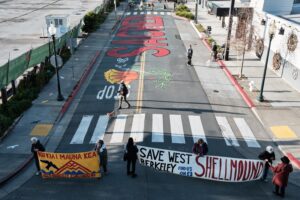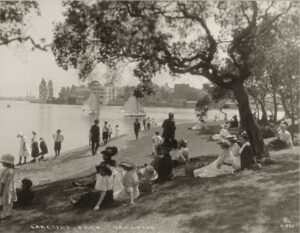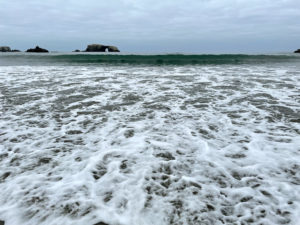Tim Hastings wrote to us wondering about “many large round, almost ‘dinosaur-egg’ like rocks dotting the muddy sands” when he was hiking the Estero Trail. Tim’s guess is that the soft rock is susceptible to erosive shaping during the rise and fall of tides; thus the almost uniform rounded, oval shape of these small boulders.
That’s possible, but depending on where exactly these were along the trail, we’re going to guess that these are actually “concretions” — in his Natural History of the Point Reyes Peninsula, Jules Evens defines that term this way:
Concretion Occurs in sedimentary rock when minerals fill the spaces between the grains and solidify, cementlike, forming a spherical shaped mass. The resulting structure is more erosion-resistant than the original rock. Examples are exposed in the Bolinas cliff at the high-tide line and in the cliffs at Drake’s Beach.
It’s possible that the rocks you saw simply weathered into round shapes (I’m still awaiting more expert opinions from some of our geology and Point Reyes experts), but there might well be some of concretions eroded out of nearby cliffs and bluffs as you get closer and closer to the coast. If you took a route like the one Jules Evens did on the Estero Trail to Sunset Beach, then that’s even more likely.
though this isn’t the case at Point Reyes, concretions are often associated with tafoni, the amazing fretwork erosion visible at Salt Point State Park, El Corte de Madera Creek Preserve, Castle Rock State Park, and elsewhere (check out our tafoni around the Bay roundup).
Among the most famous collections of concretions we know about is Bowling Ball Beach up in Mendocino County. Very cool:
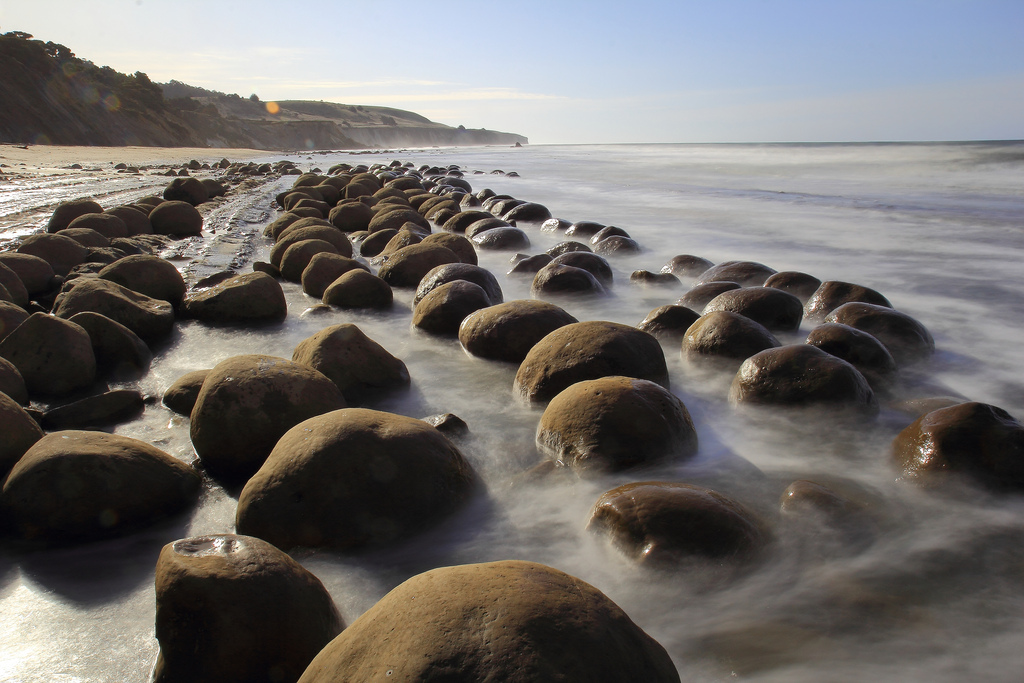
Readers, if you have more ideas for explaining Tim’s mystery rocks, let us know!

